Bigger people can have fun paddleboarding too! If you’re carrying around a lot of weight, it shouldn’t stop you from enjoying one of the most popular water sports around.
If you’re heavier and taller, you might have a steeper learning curve than other paddleboarders do. Reacting to changes in the waves, navigating rivers, and other challenges to balance can be harder.
But that shouldn’t discourage you from getting on a paddleboard. Even if you have to spend a bit more time learning the ropes, it’s an incredible sport, and there is plenty of equipment out there designed for you!
Large people can certainly paddleboard. The main thing that you need to do is find equipment designed to carry your weight. As more people get into paddleboarding, finding something that can support your weight and hold you up is easier than you think.
If you’re thinking about starting paddleboarding as a hobby, we’ve put together some helpful information to get you started. Larger people will need to do a bit more work, but it’s totally doable!
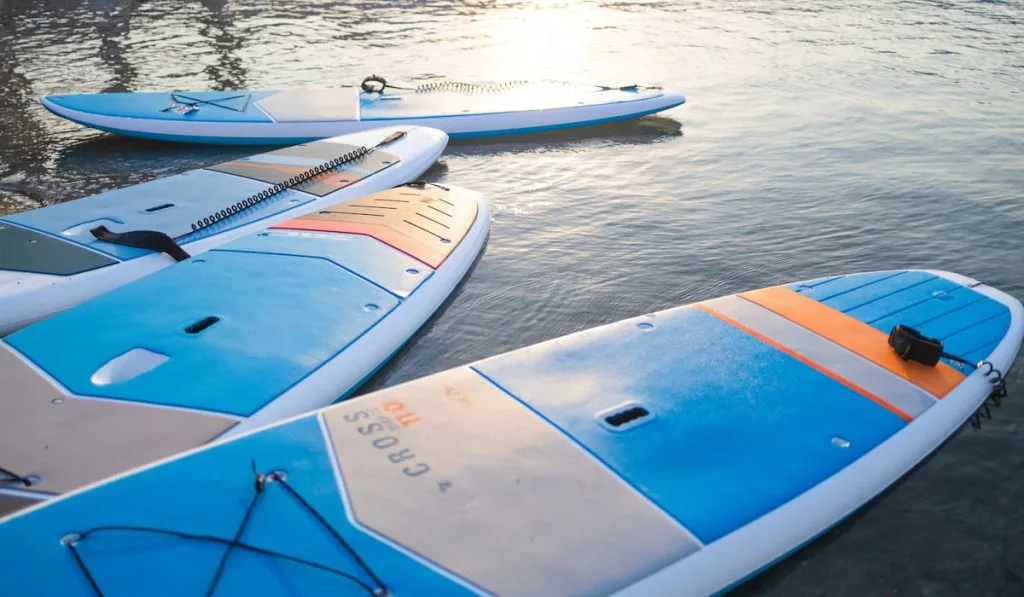
Buying the Right Paddleboard
Did you know that there are paddleboards for sale that have weight capacities over 1,000 lbs? Once you realize that there are a ton of different board options, you shouldn’t worry as much about finding the right board for you.
You might not be able to find the right board to support your weight at the first store you visit, but they are out there. At the end of the day, you may have to look online and have something shipped to you, but you can find something without much trouble.
A big part of being successful on a paddleboard is finding a sturdy board that will react the way you expect it to.
If you’re taller or heavier, then smaller boards that aren’t designed to hold your weight may not provide the stability you need as you move around on the water.
For heavier people, you essentially have two options when it comes to boards. They are:
- Inflatables – Inflatables are relatively newer paddle boards that offer more flexibility because you can shove them in the trunk and take them around without a truck or a roof rack on your car.
These boards come in anywhere from 10 to 15 feet long. The 15-foot inflatables are typically made for people who want to ride board tandem, but you can use them alone as well if you are particularly tall.
Most of these boards are 6 inches thick and can support around 300 lbs each. Some even have a weight capacity of around 500 lbs. They weigh around 25 lbs, so are still portable and easy to move around whether you’re taking them out of the car or pushing them around in the water. - Epoxy – Epoxy boards are more sturdy than inflatables, but there are still several options that are great for heavier people. You can find epoxy boards designed to support weights over 250 lbs, and some will support 285 lbs.
These boards are typically thinner because they are solid, and they weigh a few more pounds than inflatables. They may look and move a bit sleeker on the water than inflatables, but, obviously, they are harder to move around because they don’t deflate.
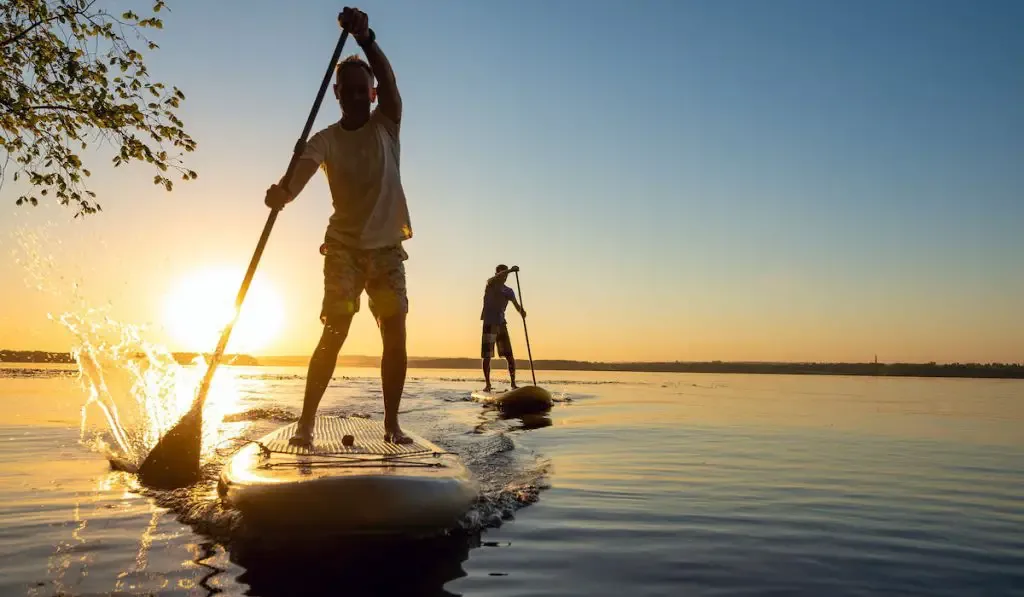
Overcoming the Fear of Sinking On Your Paddleboard
Heavier people are understandably more conscious of their weight. It doesn’t matter if you’re a wrestler at a team practice or someone getting on your friend’s small boat, you worry about how your weight will affect things.
One issue heavy people worry about when it comes to paddleboarding is sinking in the water. It’s normal to worry about that because, after all, when was the last time you saw a heavier person surfing or water skiing? It’s not something you see every day. You wonder, “What are the odds this board will keep me afloat?” as you step on.
If this is a concern for you even after researching boards that will support your weight, you may want to buy something bigger and wider that offers more stability.
You may have a harder time pivoting on a larger board, but at least you will feel more comfortable getting on.
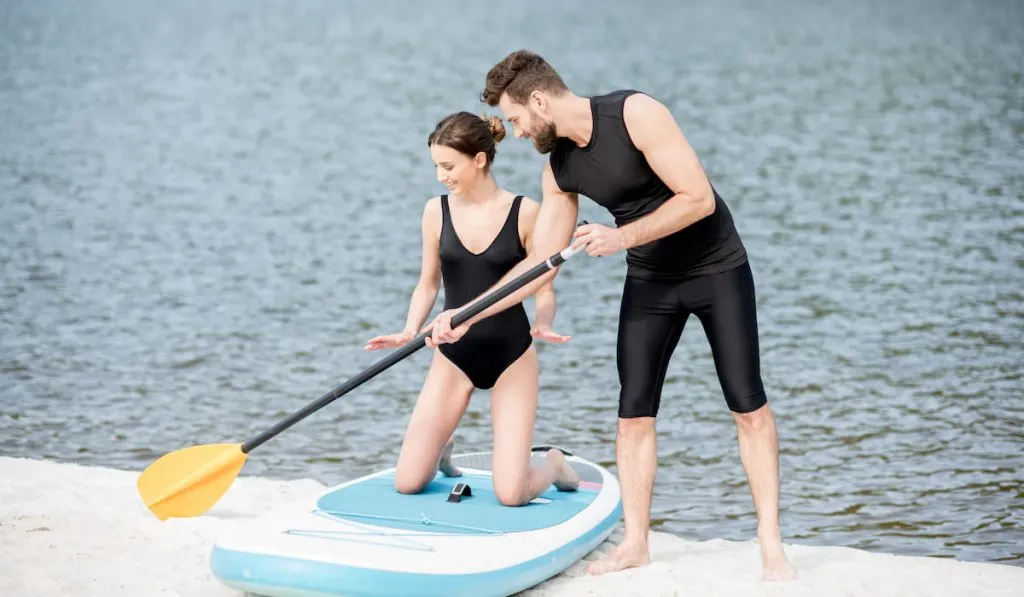
What You Can Expect the First Time You Paddleboard
If you’re not used to water sports or you’re concerned about whether you’re too heavy to paddleboard, knowing what to expect can help you get over the anxiety of trying.
One of the great things about paddleboarding is the convenience of the sport. You don’t need a team to try it. All you need is a board and some free time in striking distance to some calm water.
Here’s what you can expect:
The balance will be difficult – Even if you’re not heavy, your first few times on a paddleboard will be harder than you expected. Staying loose on your board as you move around the water is hard, and bigger people often struggle with balance. You’re going to fall off a lot, all you have to do is keep getting back on.
Cardio – Stand-up paddleboarding is consistently ranked as one of the most intense exercises out there. You’re going to be burning a lot of calories.
I know it may look easy as you watch from the shore as people glide effortlessly across the water. What you don’t see is their bodies and muscles constantly adjusting to small changes to stay balanced.
You’re going to be tired, and your core muscles and leg muscles will get quite the workout. Don’t plan an overly ambitious trip your first time out. Take it slow and progress slowly.
You Need the Right Gear – You may be an excellent swimmer, but you should always wear a life vest when you are paddleboarding. You never know if you are going to fall off of your board far from shore, or whether you’ll have to help someone else out, in which case the vest will come in handy.
A life vest is crucial, but it’s also just one piece of the gear you’ll need. You should also always wear a board leash to stop your board from zipping out from underneath you and floating far away. If you’re going to be out in the sun, make sure to bring a hat and plenty of sunscreen so you can reapply while you’re out on the water.
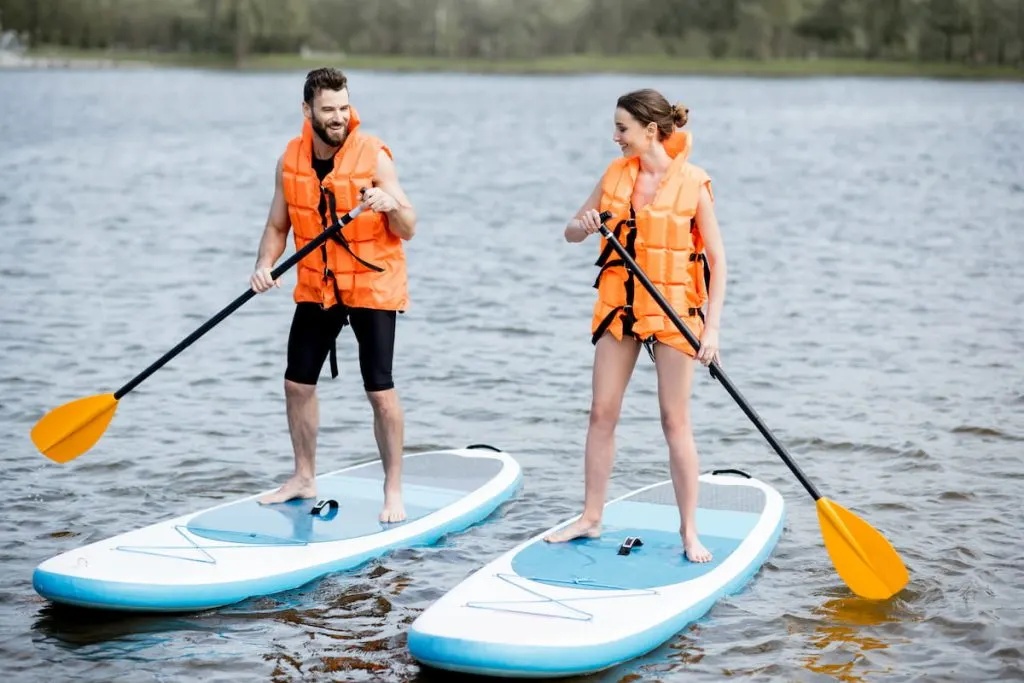
Practice Getting on the Board Several Times First
The last thing you want to do is get stuck out on the water without knowing how to get back on your board. You’ll have to swim all the way back to shore just to get back on.
Sure, it’s going to be harder for a heavier person to get back on the board, but it’s totally doable. Here’s how you can do it.
- Practice in shallower water – You’re going to fall off your board at some point. There’s no way around it. Better to fall off in shallower water where you can practice getting back on several times instead of wasting time swimming as you drag your board around.
Practice until you feel comfortable getting on and you feel good and balanced on the board.
- Getting back on in deeper water – When you’re in the water, first you need to secure your paddle. Odds are it’s not on a leash, and you don’t want to get on your board only to see your paddle floating away several feet from you. Lay the paddle across the front end of your board.
- Grab the handle in the center of the board and lay your other arm out flat across the board toward the front end. Start kicking your legs to lift them up to the surface of the water. Basically, you want to try to be floating as high as you can. With your off hand, push the board down and try to lift yourself up on the board as you pull the board under you with your hand on the handle grip at the same time.
As you feel your board start to go under your chest, start swinging the leg that’s closer to the back end up onto the board. Once your center of gravity is securely on the board, take a moment to gather yourself before you get to your knees and can fully recover.
Start On Your Knees
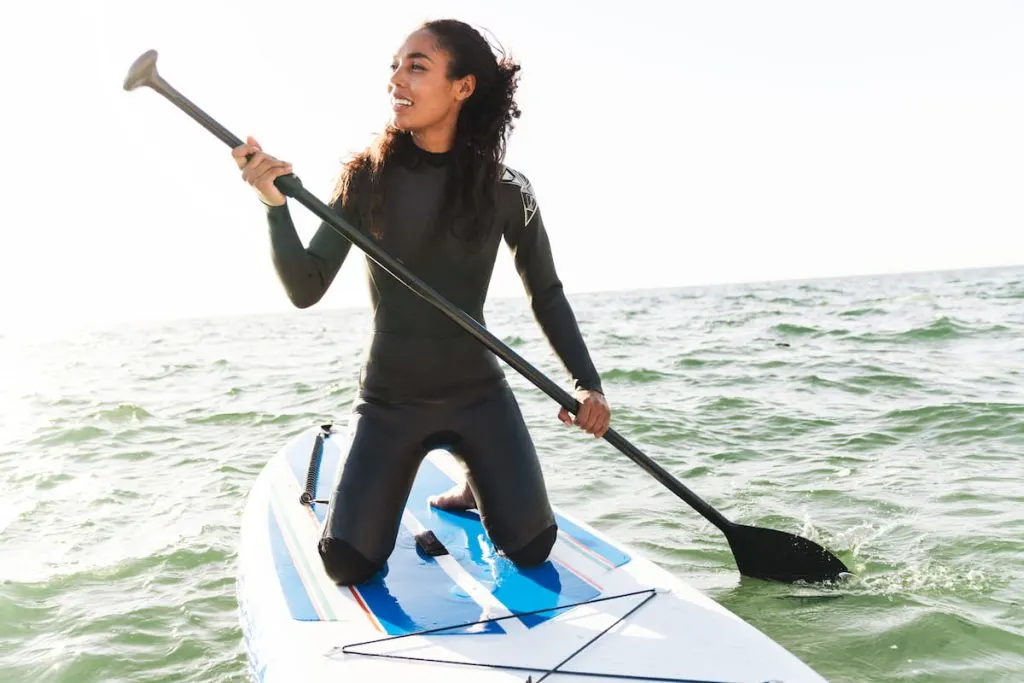
If you’re worried about balance and falling off, you can always start paddleboarding on your knees.
Most people who pick up the sport, whether they are heavy or not, spend at least some time on their knees learning how to steer their board and how to develop the balance they need to stand.
If you need a bit more time on your knees, so be it. It’s completely fine. The key is to paddleboard in a manner that you feel safe and that will encourage you to keep coming back to try again.
With the right board and safety precautions in place, paddleboarding can be a great sport no matter how heavy you are!
